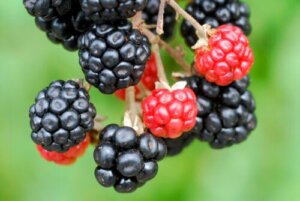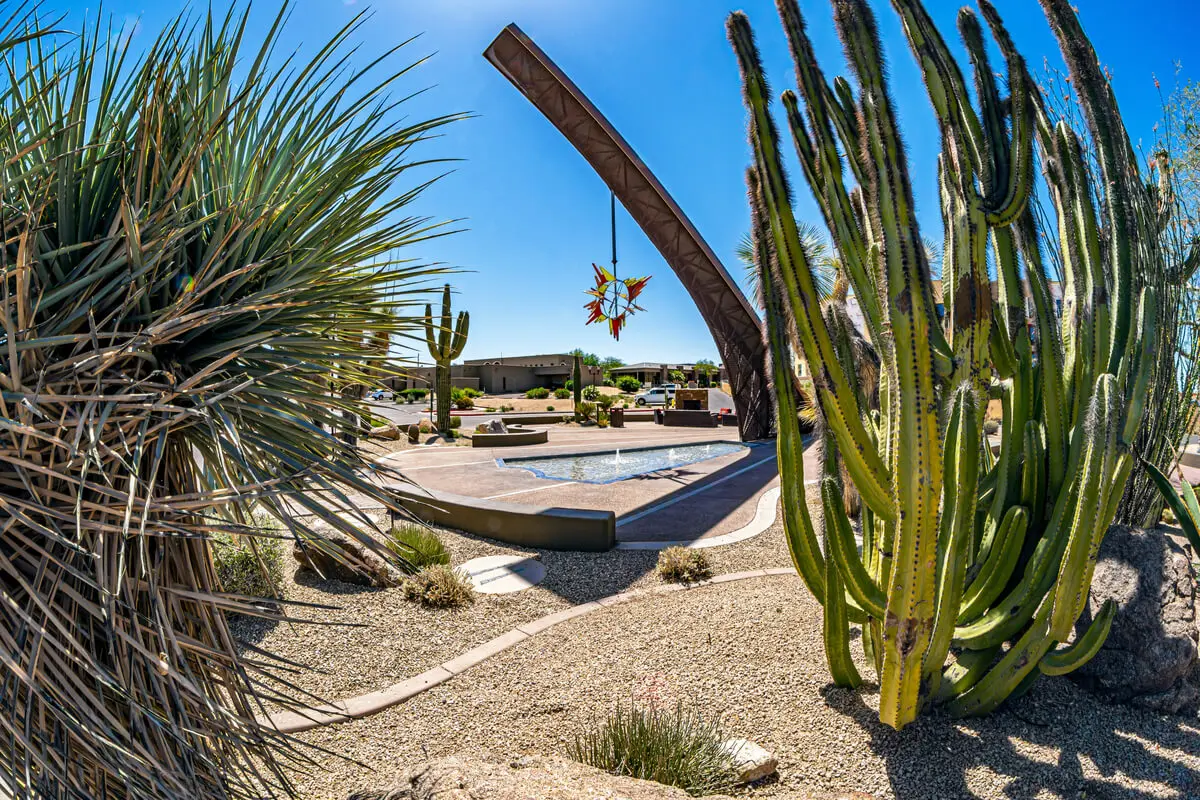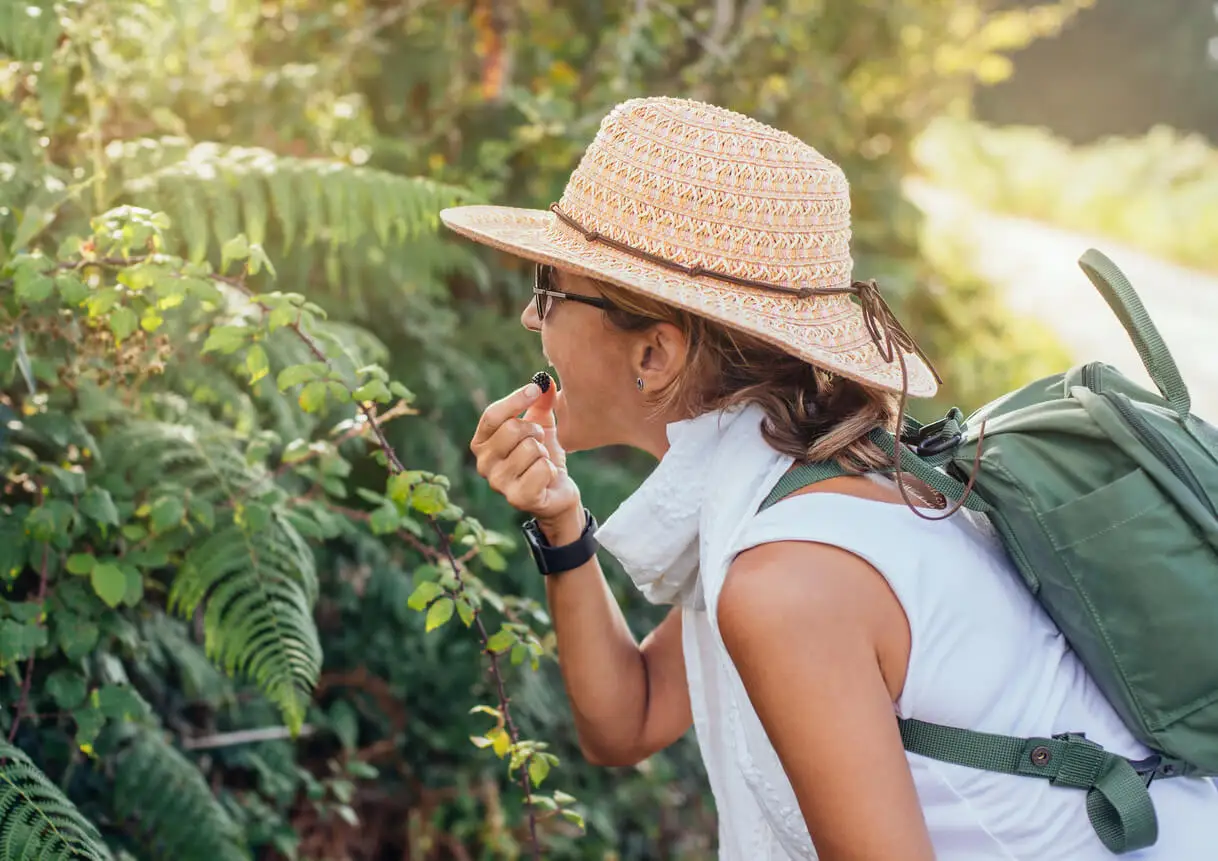How to Grow Blackberries and What Are Their Benefits?

Blackberries are dark-pigmented, sweet berries with a certain amount of acidity that adds flavor to many recipes and smoothies. In addition, they have multiple nutritional benefits, highlighting their antioxidant and anti-inflammatory properties. Learning how to grow blackberries is very simple; it’s enough to identify some characteristics that affect their growth and basic care techniques.
In principle, this is a plant with numerous variants. Most of them are resistant to temperate and humid climates.
Its growth is abundant, so it’s necessary to pay attention to pruning, watering, and the nutritional state of the soil. However, it’s possible to enjoy the benefits of blackberries in a much shorter period of time compared to other plants.
What are blackberries?
The blackberry comes from the Rubus ulmifolius species, a shrub-like plant with abundant growth from the roots to the branches. It belongs to the Rosaceae family and has a long list of variants, including some that are thorny and others that are without thorns. It’s native to large geographical areas, including North Africa, Asia, and Europe.
When learning how to grow blackberries, it should be noted that the Rubus genus is made up of variations. The most commonly used are known as Ashton Cross, Dewberry, Thornless, Evergreen, Himalaya, and Bailey.
All of these variants do best in temperate climates and humid conditions. They’re not as suitable for arid geographic areas.
The special Mediterranean
In contrast to other blackberry species, the Rubus ulmifolius L. variant, better known as blackberry, is a species of blackberry better known as the Mediterranean blackberry. This variety can grow in dry climates. This is an important aspect to take into account if you live in an area with a hot climate.
This plant withstands better high temperatures and aridity.

Tips for growing blackberries
Growing blackberries, maintaining them, and enjoying their benefits is a simple task, which includes basic care, along with some details. These are related to the frequency of watering, pruning, and attention during the hot weather periods of the year.
We think you may be interested in reading this, too: Strawberries Romanoff Recipe: Strawberries and Cream with a Difference
How to grow blackberries
Planting does not require major complications. This is a plant that begins to grow as soon as it’s inserted into the soil.
To do this, you must dig a relatively small big hole and insert it in it. It’s advisable to take into account the space of your yard garden, since blackberries tend to grow and expand a lot.
The expansion should be controlled by pruning so that it doesn’t become invasive with respect to other species already installed. Alternatively, it’s possible to build terraces or platforms to delimit the plant space.
Soil
Although soil conditions are subject to the variant planted, in general, blackberries are more tolerant of spaces with a neutral or slightly acidic pH. It’s possible to enhance their development by adding fertilizers or compost to the soil.
The optimum pH level to grow blackberries is between 5.5 and 6.5.
Moisture
It’s very important for blackberries to have spaces with good water drainage. In addition, they develop better in moist soils, so it’s recommended to keep them in these conditions, without waterlogging the plants.
Temperature
Blackberries require hot and cold periods. However, most of the variants are not very resistant to hot and dry climates.
Therefore, although they should go through the summer months to enhance their growth, it’s important to maintain soil moisture when temperatures are high.
Pruning
One of the fundamental tasks in the maintenance of this plant is pruning. This is because, under natural conditions, blackberry roots are generated from the stems, causing a vine of branches.
During the summer months, once the fruits have come out, all dry branches should be cut. As a complement, it’s also advisable to carry out winter pruning, as this favors the birth of new shoots.
Sunlight
As for sunlight, it’s preferable that this plant receives direct sunlight, at least for a few hours a day. However, if the climatic conditions in the area tend to be hot, they can better withstand shade.
Frequent watering
The key to effectively moisturizing blackberries is to water them frequently but sparingly. This is because absorption is maintained at shallow levels.
Therefore, reaching waterlogging can be very detrimental to the plant. The process should be intensified during the flowering stage. The ideal technique, in this case, is drip irrigation.
Fruits and multiplication
With proper care and attention, it’s possible to enjoy blackberries in the second year of planting. However, these specimens appear only once a year, unlike other similar berries.
To establish the differentiation, it must be taken into account that blackberries are a type of blackberries that can come from different plant varieties.
Harvesting is done during the summer months and when ripening begins. That is, it can take place at the moment when they acquire a very dark tone.
They must be refrigerated as soon as they’re harvested. On the other hand, if you want to multiply the plant, just cut some stems and place them in another part of the land. With frequent watering and a suitable type of soil, the growth of a new specimen will be fast.

Like this article? You may also like to read: Lose Weight Healthily With These Seven High-Protein Vegetables
Enjoy the benefits of blackberries
To enjoy the nutritional and gastronomic advantages offered by these berries, the harvest should be carried out with the indications already mentioned. In addition, it should be taken into account if the specimen has thorns, in which case it’s advisable to wear the appropriate protective equipment when picking the berries.
One of the main components of the fruit is anthocyanins. This is the pigment responsible for the berries’ purple color. It’s present in several types of fruits and vegetables. Several studies demonstrate its antioxidant capabilities. In addition, blackberries are a source of fiber and vitamins A, C and K.
These berries can be incorporated into our diets in various forms, from summer salads to juices and smoothies, also they’re great in yogurts, cakes, or as a simple snack.
Apart from the nutrients that blackberries provide, we must not forget their fructose content. Therefore, it’s not advisable to overdo it, since it can favor weight gain and insulin resistance.
All cited sources were thoroughly reviewed by our team to ensure their quality, reliability, currency, and validity. The bibliography of this article was considered reliable and of academic or scientific accuracy.
- de León Fierro Lidia Guillermina, Rodriguez-Villalobos Judith Margarita, Candia-Luján Ramón, Carrasco-Legleu Claudia Esther, Enriquez del Castillo Liliana Aracely. Efectividad de los suplementos antioxidantes en la mejoría del desempeño físico atlético. Artículo de revisión. Rev haban cienc méd [Internet]. 2019 Abr [citado 2022 Oct 13] ; 18( 2 ): 194-216. Disponible en: http://scielo.sld.cu/scielo.php?script=sci_arttext&pid=S1729-519X2019000200194&lng=es
- González-Martínez, Blanca Edelia , Rodríguez-Bies, Elisabet , Gutiérrez-Soto, Guadalupe , Estrada-Díaz, Sylvia Adriana , Rangel-Colmenero, Blanca Roció , García-Dávila, Myriam , Protección antioxidante de zarzamora para disminuir daño muscular en atletas de elite. Revista de Psicología del Deporte [Internet]. 2017;26(2):157-163. Recuperado de: https://www.redalyc.org/articulo.oa?id=235152045022
- Carvallo Pamela, Carvallo Eugenia, Barbosa-da-Silva Sandra, Mandarim-de-Lacerda Carlos Alberto, Hernández Alfonso, del-Sol Mariano. Efectos Metabólicos del Consumo Excesivo de Fructosa Añadida. Int. J. Morphol. [Internet]. 2019 Sep [citado 2022 Oct 13] ; 37( 3 ): 1058-1066. Disponible en: http://dx.doi.org/10.4067/S0717-95022019000301058
- Romo Figueroa, María Gabriela, Meza Moller, Amparo del Carmen, Navarro Aguilar, Ramón , Duarte Ochoa, Víctor René, LA ZARZAMORA (RUBUS SP.), CULTIVO ALTERNATIVO PARA EL ESTADO DE SONORA. Revista Mexicana de Agronegocios [Internet]. 2013;33( ):600-607. Recuperado de: https://www.redalyc.org/articulo.oa?id=14127709019
This text is provided for informational purposes only and does not replace consultation with a professional. If in doubt, consult your specialist.








